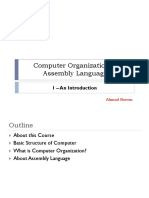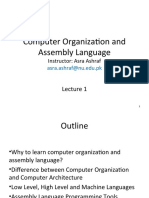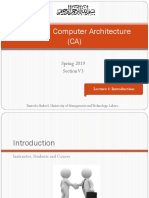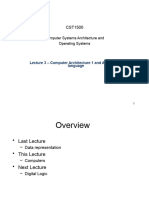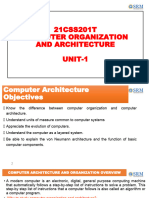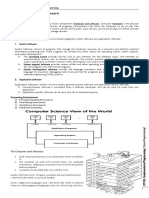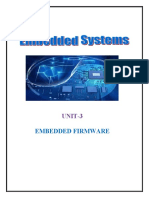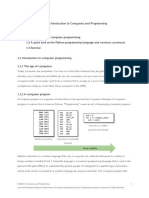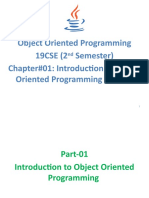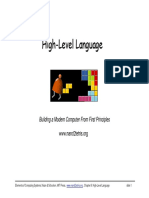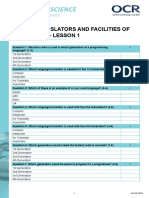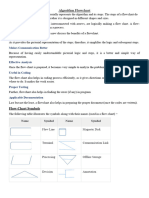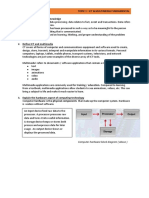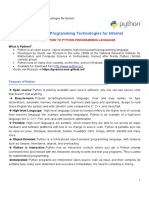0% found this document useful (0 votes)
69 views39 pagesCNE302 Computer Organization and Architecture: Lecture 01 - Introduction Instructor
This document provides an introduction to a lecture on computer architecture and organization. It defines computer architecture as consisting of an instruction set architecture and computer organization. It asks important questions about assembly language, machine language, and their relationship to high-level languages. Finally, it outlines the hierarchy of programming languages from low-level machine language and assembly to high-level languages.
Uploaded by
Nour Eldeen MohammedCopyright
© © All Rights Reserved
We take content rights seriously. If you suspect this is your content, claim it here.
Available Formats
Download as PPTX, PDF, TXT or read online on Scribd
0% found this document useful (0 votes)
69 views39 pagesCNE302 Computer Organization and Architecture: Lecture 01 - Introduction Instructor
This document provides an introduction to a lecture on computer architecture and organization. It defines computer architecture as consisting of an instruction set architecture and computer organization. It asks important questions about assembly language, machine language, and their relationship to high-level languages. Finally, it outlines the hierarchy of programming languages from low-level machine language and assembly to high-level languages.
Uploaded by
Nour Eldeen MohammedCopyright
© © All Rights Reserved
We take content rights seriously. If you suspect this is your content, claim it here.
Available Formats
Download as PPTX, PDF, TXT or read online on Scribd
/ 39














